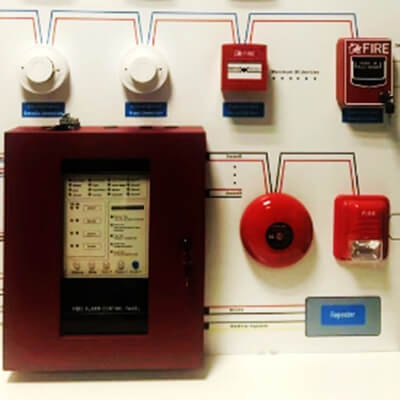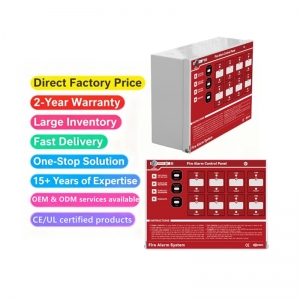Fire Alarm Control Panels (FACPs) are categorized based on their technology, functionality, and design. Here are the primary types:
1. Conventional (Non-Addressable) FACP
-
Design: Divides the building into "zones" (circuits) with multiple devices (e.g., smoke detectors, pull stations) per zone.
-
Functionality: When a device triggers, the panel identifies the zone but not the exact device.
-
Use Case: Smaller buildings (e.g., small offices, retail stores) where pinpoint accuracy is less critical.
-
Pros: Cost-effective, simple installation.
-
Cons: Limited diagnostic capabilities, less precise.
2. Addressable FACP
-
Design: Each device (detector, pull station) has a unique address (identifier).
-
Functionality: The panel identifies exact device location and status (e.g., smoke detected, fault).
-
Use Case: Large/complex buildings (e.g., hospitals, high-rises) requiring precise monitoring.
-
Pros: Advanced diagnostics, scalability, reduced false alarms.
-
Cons: Higher cost, complex installation.
-

3. Hybrid FACP
-
Design: Combines conventional zones with addressable loops, allowing integration of older systems with newer technology.
-
Functionality: Balances cost and flexibility for retrofitting or partial upgrades.
-
Use Case: Buildings transitioning from conventional to addressable systems.
4. Wireless FACP
-
Design: Uses radio frequency (RF) or wireless communication instead of physical wiring.
-
Functionality: Ideal for historic buildings, temporary setups, or areas where wiring is impractical.
-
Use Case: Heritage sites, construction sites, or retrofitting without structural changes.
-
Pros: Easy installation, minimal disruption.
-
Cons: Requires battery maintenance, potential signal interference.
5. Voice Evacuation FACP
-
Design: Integrates voice communication (speakers) with alarms to deliver evacuation instructions.
-
Functionality: Provides real-time, location-specific guidance during emergencies.
-
Use Case: High-occupancy buildings (e.g., malls, airports, stadiums).
6. Intelligent (Analog Addressable) FACP
-
Design: Advanced addressable systems with continuous two-way communication between the panel and devices.
-
Functionality: Analyzes sensor data (e.g., smoke levels) to reduce false alarms and predict risks.
-
Use Case: Critical facilities (data centers, labs) requiring high reliability.
Summary Table
| Type | Key Feature | Best For |
|---|---|---|
| Conventional | Zones with grouped devices | Small, simple buildings |
| Addressable | Unique device addresses | Large/complex structures |
| Hybrid | Mix of conventional/addressable | Retrofitting older systems |
| Wireless | No physical wiring | Historic sites, temporary setups |
| Voice Evacuation | Voice-guided evacuation | High-occupancy/public spaces |
| Intelligent | Data-driven decision-making | High-risk/critical environments |
Key Takeaway
The choice depends on building size, complexity, budget, and safety requirements. Modern systems increasingly favor addressable or intelligent FACPs for enhanced safety and diagnostics.
-
 What is a Fire Alarm Control Panel (FACP) and How Does It Work?
What is a Fire Alarm Control Panel (FACP) and How Does It Work?Do you like ?0
Read more -
 What is the control panel in a fire alarm system?
What is the control panel in a fire alarm system?Do you like ?0
Read more -
 What are the application objects of the fire safety panel ?
What are the application objects of the fire safety panel ?Do you like ?0
Read more -
 Why does the protector fire alarm panel need self inspection?
Why does the protector fire alarm panel need self inspection?Do you like ?0
Read more -
 Do you know the theoretical knowledge of conventional control panel ?
Do you know the theoretical knowledge of conventional control panel ?Do you like ?0
Read more -
 Why do you need a fire safety panel in your building ?
Why do you need a fire safety panel in your building ?Do you like ?0
Read more








